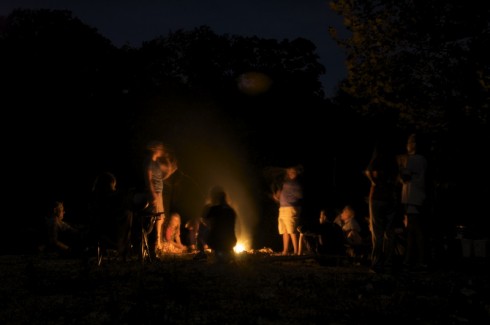
Writing is a process. There might not be one single, best, process, but breaking the process into steps is often useful for new writers trying to find their voice. The following steps come from my Middle School Montessori Training a few years back. While I’m not teaching language at the moment, I would like to get my students to write up their experience in the thunderstorm on the river using at least parts of this process.
- Step 1: Collect Seeds
- Collect ideas for topics to write about. This is why we keep a writer’s journal with us at all times. Anything can be a seed: quotes from books you’ve read; overheard snatches of conversation; ticket stubs; artifacts; rocks; notes about profound experiences (which is what I count the canoe trip in the storm as).
- Step 2: Develop ideas
- Take a seed idea and write about it. Write fast, write rough. You can fix it later. Write to surprise yourself.
- Step 3: First Draft
- Use the ideas from your rough writing to make a first draft. This does not mean editing the rough writing, in fact, you should probably put away the rough writing and start your draft from scratch.
- Step 4: Revision (the hardest part)
- Revision is making the big changes to your writing. Even if you liked your first draft a lot, making big changes helps you see your work in new, interesting ways. Try:
- Rewrite in a new genre: convert your memoir, for example into a play, or change the perspective from first person to third person.
- Physically cut and paste your story. Maybe the conclusion actually works better as an introduction? Rearrange your paragraphs, rearrange the sentences in your paragraphs. See what works and what does not.
- Read out loud, or have someone read to you. As you read you can rearrange the paragraphs (read the last paragraph first, for example).
- Revision is making the big changes to your writing. Even if you liked your first draft a lot, making big changes helps you see your work in new, interesting ways. Try:
- Step 5: Edit
- Now that you have a draft that you like, edit it for spelling, grammar, punctuation, capitalization etc.
- Step 6: Polish and Publish
- Make your story look pretty. Format your text how you want it, or how it needs to be in your word processing program. Remember, simpler is better. Fancy fonts and colors tend to distract from your story.
- Remember that there’s no final version of your story. Writers are always making changes (or wanting to make changes). You can always make changes and, if you don’t like them, revert to the original.
Notes
As an example of how revision can change a story, I have my two versions of our thunderstorm adventure here and here. They’re aimed at different audiences, but you can see that they came from the same source.